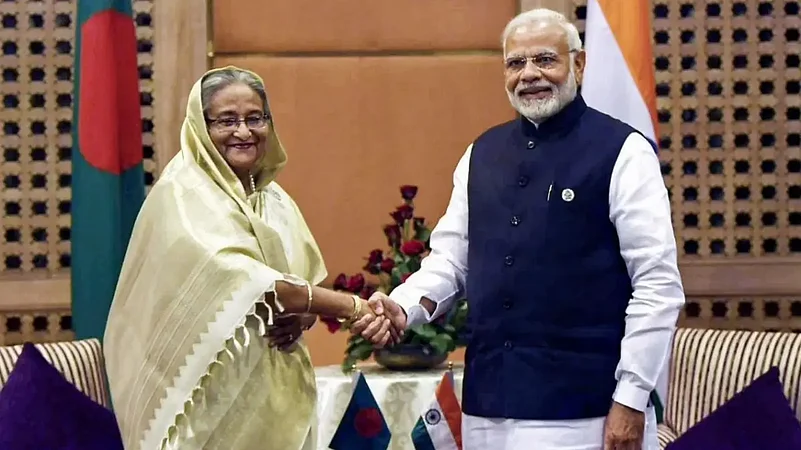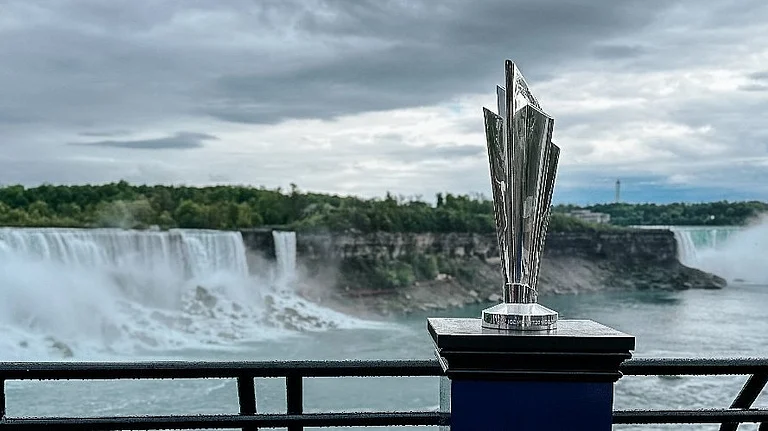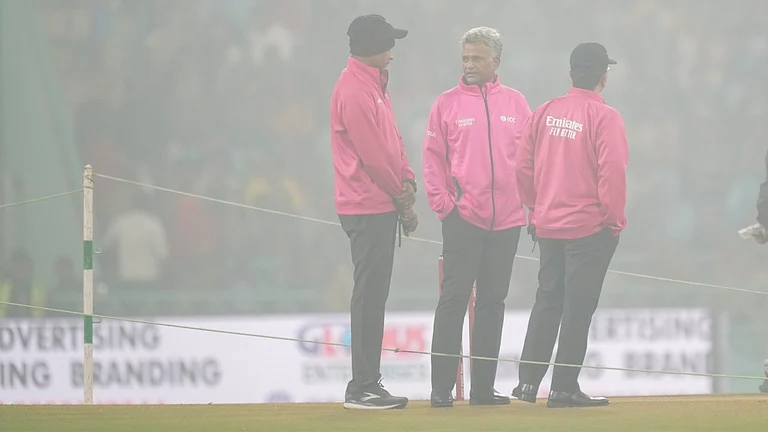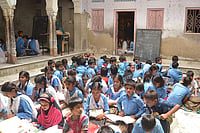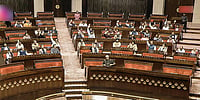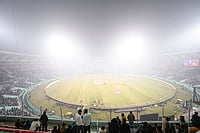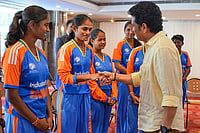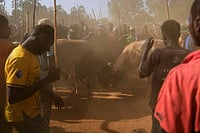Bangladeshi Prime Minister Sheikh Hasina’s arrival in India for a four-day visit to expand ties between India and its neighbour has once again piqued interest in the history of bilateral relations between the two nations. The two sides are set to announce measures to enhance cooperation in areas of defence, trade, river water sharing and in some other areas.
India and Bangladesh are expected to ink several agreements, including one on interim sharing of the Kushiyara river water following talks between Hasina and Prime Minister Narendra Modi on Tuesday. Hasina is also scheduled to travel to Ajmer in Rajasthan to visit the Dargah of the revered Sufi saint Moinuddin Chishti.
Important and strategic allies in South Asia and the region’s largest trading partners, India and Bangladesh have much in common. The nations share cultural, and linguistic similarities and a shared history which includes India’s struggle for independence and goes back centuries.
The national anthems of both India and Pakistan were written by Bengali polymath and poet laureate Rabindranath Tagore in 1906 and 1911, an important reminder of the close ethnohistorical roots of the two nations. But all has not been rosy over the past five decades. In fact, India and Bangladesh have deferred on several matters.
Here's a look at some of the highlights of Indo-Bangladesh relations since 1971:
A historic ally: 1971 Liberation War
India played an important role in Bangladesh’s liberation movement. Diplomatic relations between the two countries formally began in 1971 with India's recognition of an independent Bangladesh, which was formerly known as East Pakistan.
When the Bangladesh Liberation War broke out between East Pakistan and West Pakistan (present-day Pakistan), India intervened in support of East Pakistan and helped secure its independence from Pakistan as the country of Bangladesh.
Throughout the Bangladesh Liberation War, India under the leadership of Prime Minister India Gandhi lent economic, military as well diplomatic support to the Bengali nationalists. Millions of Bengali refugees poured into India at the time and even more were internally displaced.
However, it was only after December 3 when the Pakistani Air Force carried out preemptive strikes on eleven Indian Air Force bases that India formally joined the Bangladesh War.
According to Lailufar Yasmin, Professor, Department of International Relations, University of Dhaka, India's support for the Bangladeshi liberation war and its treatment of the millions of Bangladeshi refugees pouring into India, reflected the Gandhian and Nehruvian philosophies that dictated the country to take an overwhelming international role for fighting for those who could not do it for themselves.
The religious rifts of the 70s
Despite a warm start, relations between the Hindu and Muslim majority nations somewhat soured in later decades due to religious fissures that arose in the mid-70s when Bangladesh developed closer ties with other Islamic nations. The period saw an increased emphasis on religious identity in Bangladesh and a spike in incidents of violence against Hindu minorities. There was also a push to promote religious identity over the country’s shared ethnolinguistic identity with India. India also did not take well to Bangladesh’s participation in the Organization of the Islamic Conference.
Cold War era
Bangladesh and India were also at loggerheads when it came to Cole war allegiances. Since its liberation at the height of the Cold War, Bangladesh had been close with the USSR and the two nations formally established their relations in 1972 itself. The nation, which continues to have diplomatic and trade relations with Russia, gave ostensible support to Communist USSR with Sheikh Mujibur Rehman even crediting the Soviet block for their role in Bangladesh’s liberation.
India, on the other hand, supported a policy of strict non-alignment during the Cold War, despite inclinations toward Russia. The difference in allegiances led to further tensions between India and Bangladesh.
Bangladesh-India now: Growing trade ties
It was trade, however, that finally melted the ice between the two nations with the onset of economic liberalisation in South Asia in the late 80s necessitating the need for increased bilateral trade and engagement.
South-Asian neighbours Bangladesh and India are common members of SAARC, BIMSTEC, IORA and the Commonwealth and share several cultural similarities, especially with the Bengali-speaking state of West Bengal.
The “special relationship” was strengthened in June 2015 when the countries resolved decades-old border disputes by signing the historic land boundary agreement.
Bangladesh is an important partner for India under its "Neighbourhood First" policy and the cooperation extends to areas of security, trade, commerce, energy, connectivity, science and technology, defence and maritime affairs, among others. It is now India's biggest trade partner in South Asia and the bilateral trade has grown from USD 9 billion to USD 18 billion in the last five years. Bangladesh has become the fourth largest export destination for India with the exports registering a growth of over 66 per cent from USD 9.69 billion in 2020-21 to USD 16.15 billion in 2021-22.
The country is also India's largest development partner with nearly one-fourth of New Delhi's commitment under the Line of Credit being made to it. The total number of contracts between the two nations has crossed the milestone figure of USD 2 billion.
Bonhomie in Hasina-Modi years
The overall strategic ties between India and Bangladesh have been on an upswing in the last few years since the election of Sheikh Hasina to power as PM and the subsequent election of Narendra Modi as her Indian counterpart in 2014. The prime ministers of the two countries have met 12 times since 2015.
In March last year, Prime Minister Narendra Modi travelled to Bangladesh to attend events organised to mark the birth centenary of Sheikh Mujibur Rahman and 50 years of its liberation. In reflection of close ties, India also hosted a number of events to mark the 50th anniversary of the 1971 war that led to the liberation of Bangladesh.
India's visa operations in Bangladesh is the biggest globally. In 2019, 13.63 lakh visas were issued, according to an official estimate.
Despite the COVID-19 pandemic, both countries were able to achieve progress on important connectivity initiatives. The achievements in the connectivity sector included the inauguration of the Maitri Setu bridge over river Feni in Tripura and the rollout of the Chilahati-Haldibari rail link.
Last month, India and Bangladesh finalised the text of the agreement on interim sharing of the water of the Kushiyara river. The text of the memorandum of understanding (MoU) was finalised at the 38th ministerial-level meeting of the India-Bangladesh Joint Rivers Commission (JRC) that took place in Delhi on August 25.
However, India-Bangladesh relations have faced their ups and downs, much of which has been due to river-sharing issues and religious tensions.
River sharing and the Teesta dispute
The Teesta river dispute is an important point of bilateral talks between India and Bangladesh, as the latter has sought a fair and equitable distribution of Teesta waters from India. The 400-odd-km-long river rises flows through Sikkim and West Bengal before entering Bangladesh near Mekliganj, downstream of Jalpaiguri. Since 1980s, India and Bangladesh have been engaged in negotiations to determine the share of each country in the waters of the river.
The Teesta deal was set to be signed during the then Prime Minister Manmohan Singh’s visit to Bangladesh in September 2011 but was postponed at the last minute due to objections raised by West Bengal Chief Minister Mamata Banerjee. Banerjee had expressed strong reservations against giving Bangladesh a greater share of water from the Teesta river. The Ganga water treaty signed in 1996 is up for renewal in 2026.
(With inputs from PTI)






